Performance parameters
| Model | YJH-Q5 |
| Name | fuel liquid heater |
| heating medium | Mixture of water and antifreeze (min. 10 % to max. 50 % antifreeze) |
| calorific value(Watt) | 5000 W |
| fuel consumption (l/h) | Diesel: 0.46L/H Gasoline: 0.52L/H |
| Operating voltage range | DC10.5V—DC15V |
| power consumption (Watt) | Runtime: 36W at startup; 120W |
| Allowable ambient temperature/altitude | -40℃--40℃ Altitude≤3000m |
| whole set weight | 6.5KG |
| Allowable working pressure in the coolant circuit | 0.4bar—2.5bar |
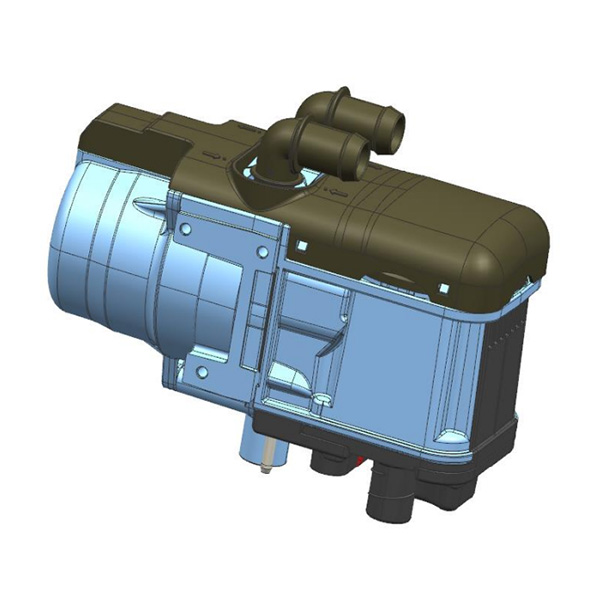
| Heater model | YJH-Q5 | ||||||
| heater | 5kw fuel liquid heater | ||||||
| heating medium | Mixture of water and antifreeze (min. 10 % to max. 50 % antifreeze) | ||||||
| Heat level | Ⅰ | Ⅱ | Ⅲ | Ⅳ | Ⅴ | Ⅵ | |
| Calorific value (Watt) Data during normal operation with diesel | 1922 | 2706 | 3568 | 4428 | 5075 | 5690 | |
| Fuel consumption (l/h) | 0.18 | 0.25 | 0.33 | 0.41 | 0.47 | 0.53 | |
| Power consumption (Watt) | Runtime | 24 | 27 | 32 | 39 | 45 | 55 |
| at startup | 120W | ||||||
| Rated voltage | 12 VDC | ||||||
Operating range Low voltage limit: An undervoltage protection device installed in the controller will shut down the heater when the low voltage limit is reached | 10.5 VDC | ||||||
| Upper Voltage Limit: Overvoltage protection installed in the controller will shut down the heater when the upper voltage limit is reached | 15 VDC | ||||||
| allowable operating pressure | Overpressure to 200 KPa | ||||||
| Pump flow | 600 L/H | ||||||
| Host protection level | IP67 | ||||||
| Design service life (h) | 20000 | ||||||
| allowable ambient temperature | Runtime | when not running | |||||
| heater/controller | -40°C to +80°C | -40°C to +85°C | |||||
| Metering pump | -40°C to +80°C | -40°C to +80°C | |||||
| micro water pump | -40°C to +80°C | -40°C to +125°C | |||||
| Weight with controller | About 1.7 Kg | ||||||
System overview
The fuel is fed from the fuel tank via a metering pump to the auxiliary heating unit via a separate line.
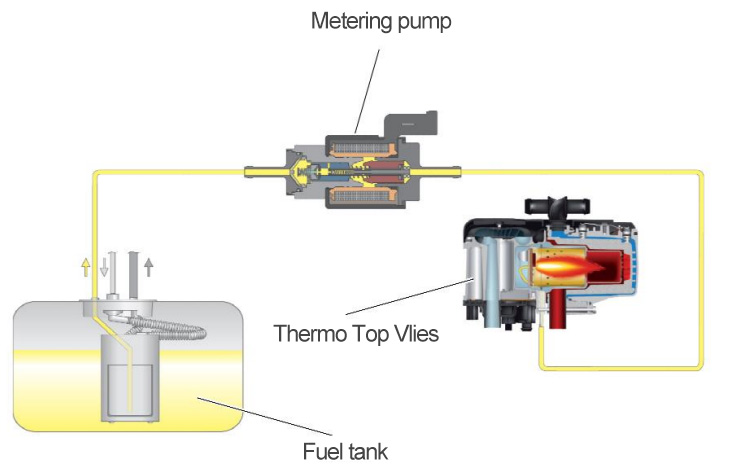
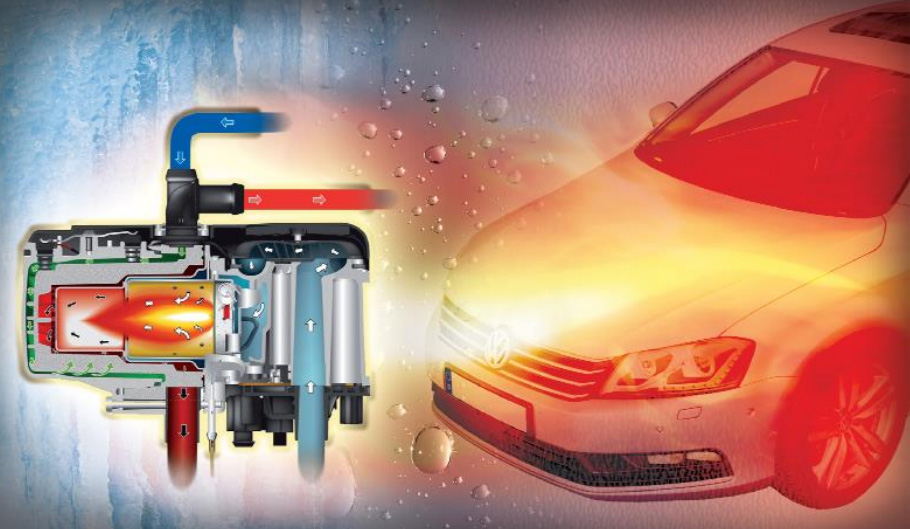
Driving in freezing weather, snow and ice in winter is always a challenge for the vehicle and the driver. At this point, anyone wants to have a comfortable vehicle that can be warmed up, has a clear view, and can start the vehicle immediately. Auxiliary heating in the vehicle does just that! The vehicle's cooling and heating system has a hydronic auxiliary heating integrated in the vehicle's cooling and heating system, which heats the coolant. The heated coolant flows through the vehicle's heat exchanger to warm the interior of the vehicle. At the same time, the coolant also flows to the battery integrated device and heats it at a constant temperature. The battery system after the constant temperature can be better charged and discharged, thereby ensuring a longer service life of the new energy vehicle and improving the driving experience.
Auxiliary heating device
• Diesel heaters use diesel fuel as fuel, and transfer heat to passenger compartment and power battery through heated coolant, thereby improving heating performance at low temperatures and reducing power consumption of pure electric vehicles.
• Diesel heaters can be divided into oil supply system, exhaust system, combustion system and water cooling system. Depending on the purpose of use, the auxiliary heating device can be used for auxiliary heating and parking heating.

New energy vehicle heating auxiliary heating
The task of auxiliary heating is to heat the coolant when the engine is running while the vehicle is running. This allows the engine to reach operating temperature faster and the interior space to warm up quickly. Auxiliary heating is an independent starting system, especially for the problem of large power consumption for heating and heating of new energy vehicles at low temperature, and to increase the cruising range of new energy vehicles while ensuring the heating inside the car. Auxiliary heating is automatically activated or deactivated when certain conditions are met.
New energy battery constant temperature auxiliary heating
The suitable temperature for new energy vehicle batteries to work is 0-40°C. Because the suitable temperature of the cell is 0-40°C, if the temperature is too high or too low, it will affect the activity of the cell and cause irreversible damage, and even affect the life of the cell. This auxiliary heater can heat the liquid in the cooling system of the battery system, and adjust the temperature in real time according to the needs of the model, so as to ensure that the battery can be charged and discharged at a suitable temperature. It plays a positive role in the promotion of new energy in the northern region and ensures normal battery life The mileage also guarantees the battery life. Auxiliary heating is automatically activated or deactivated when certain conditions are met.
Where is the auxiliary heating installed in the vehicle?
The installation position of the auxiliary heating device is related to the model. The auxiliary heating unit YJH-Q5 described in this manual refers to a vehicle whose installation position is on the right front side behind the main headlamp. Connection to the fuel supply system is made via a separate line leading from the fuel tank.

Connection to cooling water circulation system
Connect the heater in series to the cooling water circulation system.
Cut off the water inlet hose from the car heat exchanger to the PTC heater, the heater inlet pipe is connected to the water outlet of the radiator, the heater outlet pipe is connected to the PTC and the water inlet of the expansion tank, and the heater is connected with the water pipe. . Assembly is simple. There is always water passing through the entire coolant circulation system. The original car PTC heater is disconnected. After the radiant heater is started, it will supply heat to the car's own heat exchanger.

Installation angle of the dosing pump
Always pay attention to the pressure side pointing upwards when installing the dosing pump. Each mounting angle greater than 15° is permitted here, but mounting angles between 15° and 35° are preferred.
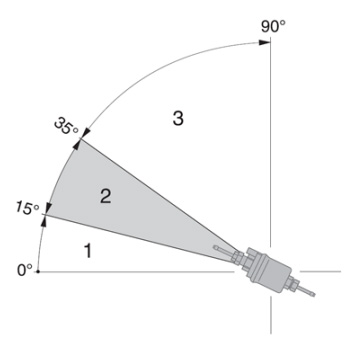
Permissible suction and pressure height of the dosing pump
Pressure height from car fuel tank to dosing pump:
a = up to 1000 mm
Suction height for unpressurized car tank:
b = up to 750 mm
Suction height in the car's tank where underpressure is created when taking oil (the valve in the tank cap has a pressure of 3 Kpa):
b = up to 400 mm
Pressure height from dosing pump to heater:
c = up to 2000 mm

breakdown / maintenance / service
| error code | Fault meaning | cause of issue |
| ER01 | electricity failure | Use voltage too low or too high |
| ER02 | Fan failure | Fan stuck, short circuit, excessive current caused |
| ER03 | Oil pump failure | The oil pump plug is in poor contact, the oil pump is short-circuited, and the idle running time is too long, which may cause failures due to overheating. |
| ER04 | Pump failure | Poor contact of the water pump plug, short circuit of the water pump, stuck/locked rotor of the pump impeller |
| ER05 | flame goes out | The oil supply is interrupted, and the oil pipe is caused by a large number of air bubbles and excessive carbon deposition. |
| ER06 | Flame sensor failure | This fault can be caused by the virtual connection of the sensor plug, grounding, or loss of resistance |
| ER07 | Igniter failure | The ignition plug plug is virtually connected, the initial hot spot is in the wrong direction, and the igniter loses resistance, causing a fault |
| ER08 | Secondary ignition failed | Whether the oil pump is working or the oil supply pipeline is normal, and whether there is air leakage or blockage |
| ER09 | Water temperature sensor failure | Whether the sensor has virtual connection, grounding, loss of resistance value and cause failure |
| ER11 | Dry burn sensor failure | Whether the sensor has a virtual connection, there is no liquid circulation in the water jacket, or there is gas in the water jacket |
| ER12 | communication fail | Whether the main harness connection is virtual or disconnected |
Diesel heater atomization method
YJH-Q5-A second generation heater adopts volatilization atomization method
Three layers of volatilization cushions are used in the volatilizer to ensure the stability of fuel volatilization.
The first layer uses a ceramic fiber surface cushion to make the fuel diffuse evenly in the evaporator.
The second layer is made of iron-chromium-aluminum fiber cotton cushion, which further spreads the fuel evenly and covers the entire volatile felt.
The third layer adopts iron-chromium-aluminum sintered felt. After the fuel passes through the high-density sintered felt, the air enters through the air inlet holes on the side to achieve the volatilization and atomization of the fuel.
The sintered felt serves to predistribute the incoming fuel oil. Subsequently, the pre-distributed fuel reaches the large surface of the metal fiber mesh evenly, where it evaporates.
The air needed to form the mixture is drawn through the combustion air blower and into the burner assembly through the primary air intake. At this point, the fuel vapor mixes with the primary air to form a flammable fuel-air mixture.
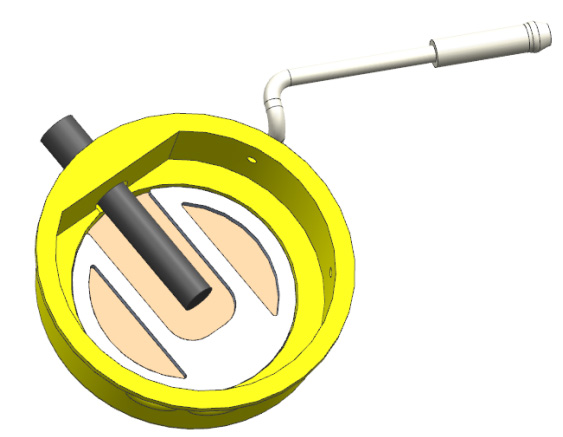
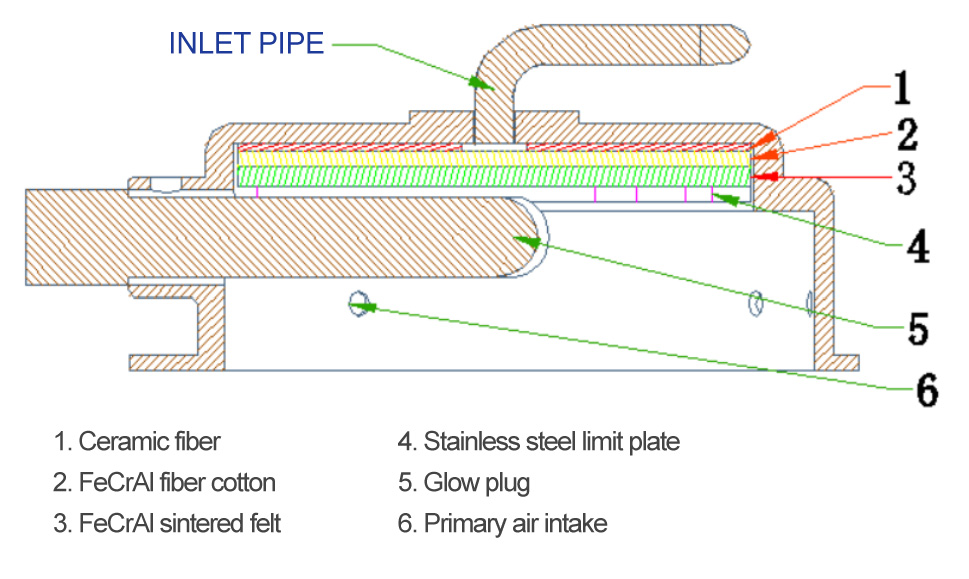
combustion chamber structure
The structure of the combustion chamber of the YJH-Q5-A heater is shown in the figure on the right. The fuel and air form a combustible gas in the volatilizer, which is ignited by the ignition plug, and is assisted by the intake air through the secondary air intake hole to achieve a stable combustion flame.
The incomplete combustion can be re-combusted in the secondary combustion chamber to make it as complete as possible.

Detailed explanation of combustion chamber ignition
The auxiliary heater control unit controls the combustion process. The combustion process is divided into three stages.
1. Startup phase
Start auxiliary heating The auxiliary heating is switched on. The glow plugs with flame monitoring are energized and the air delivered by the combustion air blower flows in.
Fuel supply and fuel pre-distribution
The quantity of fuel delivered by the metering pump is pre-distributed in the wax pan. Combustion air blower on.
Fuel Distribution and Evaporation
The fuel enters the metal fiber mesh and evaporates. The evaporated fuel is mixed with the primary air.
ignition stage
The glow plug ignites the fuel-air mixture.
combustion stage
The combustion process is in progress. The flame spreads in the combustion chamber and flue. Glow plugs are no longer energized.
stable combustion process
The flame burns steadily. The glow plugs are de-energized to monitor the combustion process.
air intake system
exhaust system
Water-cooled heat exchange structure
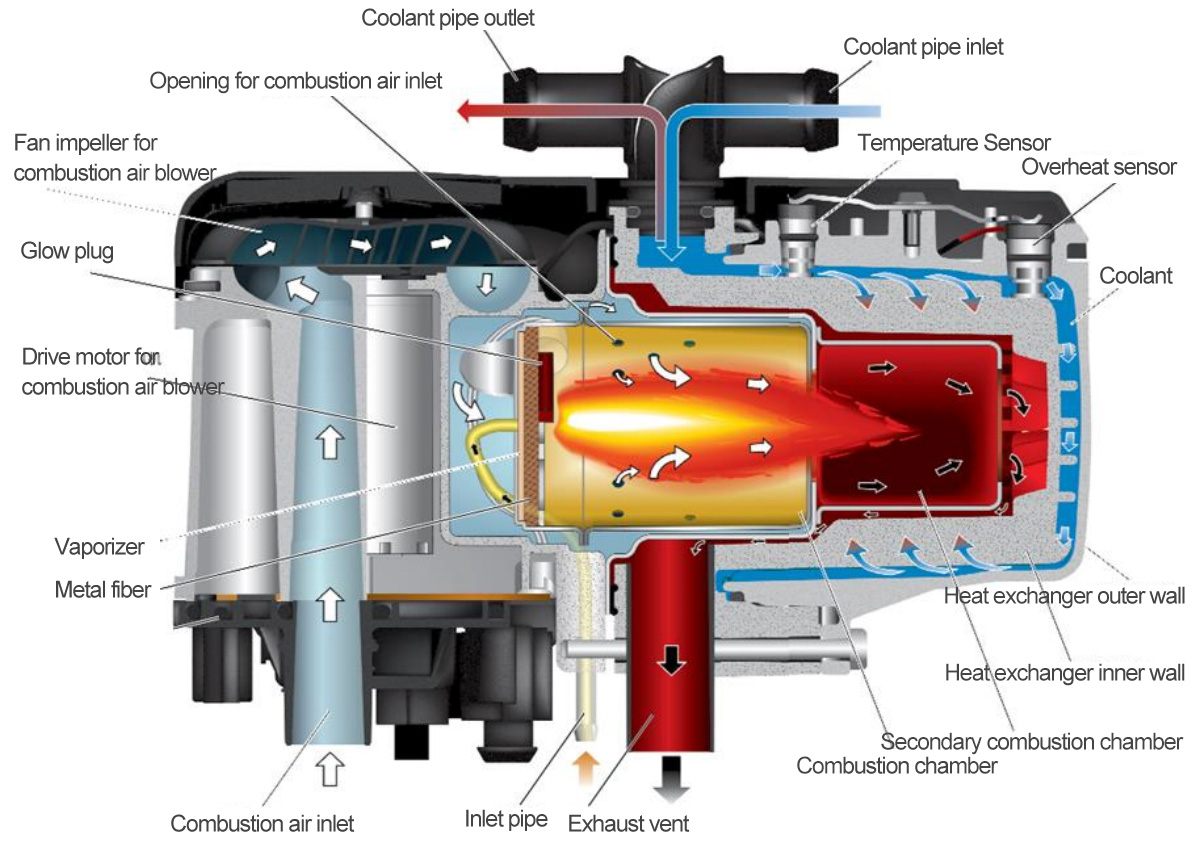
combustion air blower
Its basic structure is equivalent to an auxiliary heated combustion air blower. The geometry of the outflow passages is matched to the combustor assembly with fiber mesh.
The combustion air blower and the housing form one inseparable component.

exhaust runner
The exhaust heat emitted by the auxiliary heating device through combustion is absorbed by the fins of the combustion heat exchanger. The exhaust gas is discharged through the exhaust port, and the temperature does not exceed 400 °C.
Monitor the combustion exhaust gas temperature to judge the internal flame state of the auxiliary heating device.
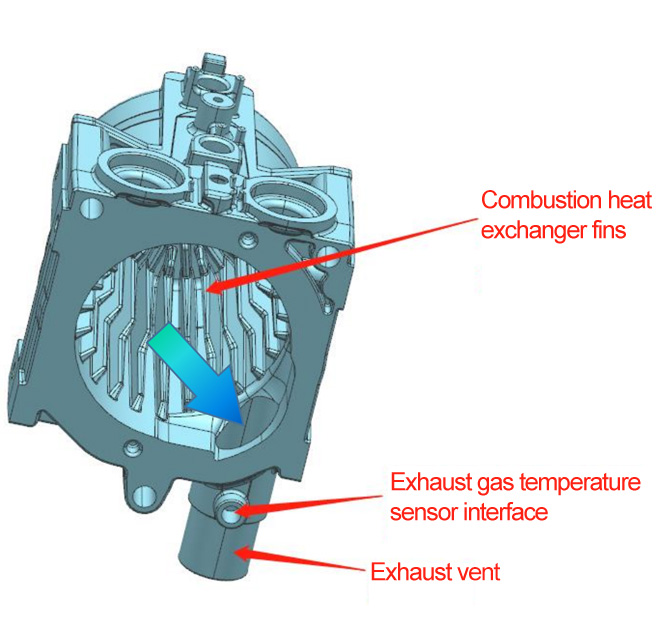
Heat Exchanger Structure
The heat exchanger consists of an aluminium alloy cast double-wall casing. The incoming coolant is heated in the cavity between the inner and outer walls of the heat exchanger. Optimum absorption and conduction of combustion heat is achieved by raised stripes on the inner wall.

Coolant
The coolant enters the double-wall heat exchanger through the coolant pipe inlet. The cooling liquid absorbs the heat generated by the combustion of the mixture through the inner walls of the heat exchanger.
The heated coolant enters the coolant circulation circuit through the outlet of the coolant pipe.
NVH optimization
Based on the noise/vibration/durability problems of the first-generation product, the second-generation product optimizes the following items.
noise optimization
blower air duct
The motor drives the wind wheel to supply air counterclockwise, sucks air from the direction of the air inlet, and transports it to the combustion chamber assembly driven by the wind wheel.
The air duct at the air inlet is designed with a smooth transition to reduce wind resistance and wind noise;
The air outlet of the air duct also adopts a smooth transition design, and the air outlet of the mute sheet is designed as a structure with a turbulent protrusion. With the strong flow of the tip breaking the air duct, the wind noise of the blower air duct is further guaranteed to be reduced.
air inlet
The air inlet is added with a simple external thread, and it is more convenient to install a standard aluminum foil tube with an inner diameter of 22mm, and it is easier to fix.
The rubber seal is used between the air inlet and the air duct at the shell to ensure the sealing of the overall air duct, and the noise reduction effect is obvious after adding the air intake air filter.
exhaust
Muffler is added to the exhaust to reduce combustion noise and wind noise.
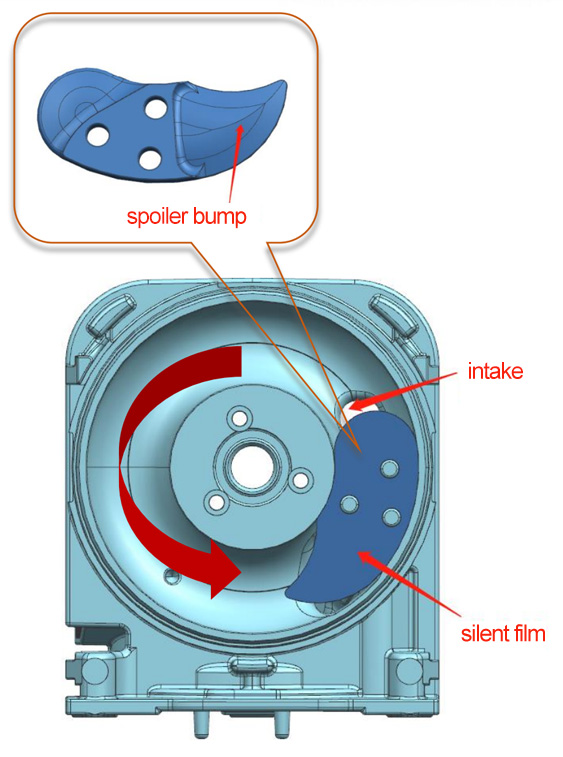
Vibration optimization
Wind turbine vibration optimization
The vibration generated by the first-generation product is mainly caused by the vibration of the wind wheel. In order to solve this hidden danger, the second-generation product needs to improve the process of press-fitting the wind wheel.
1. The gap between the wind wheel and the air duct shell after pressing is <0.3mm.
2. The wind rotor needs to increase the dynamic balance process. After the press-fitting is completed, the secondary inspection is performed, and the dynamic balance is guaranteed to be below 0.5g.
The above measures are used to ensure that the noise reduction of the whole machine is less than 75dB.
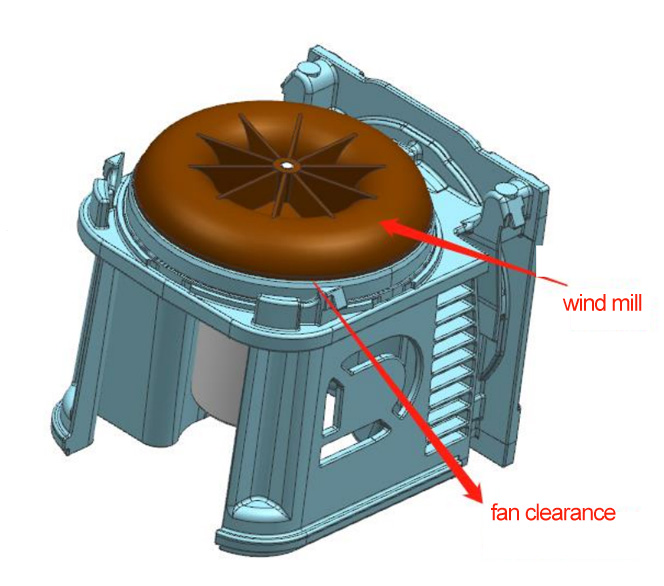
Durability optimization
The second-generation model adopts brushless motor, and the service life is increased to ≥20000h. After design optimization, the structure and sealing materials are all implemented in accordance with automotive-grade standards, which objectively increases the durability of use.